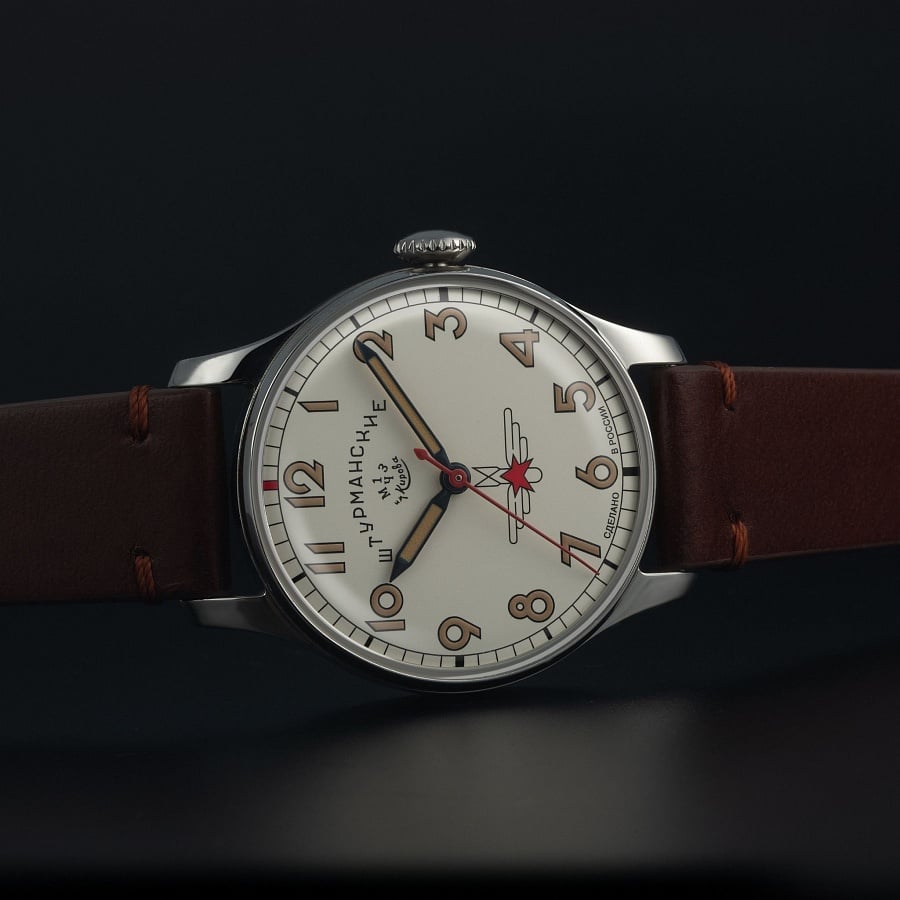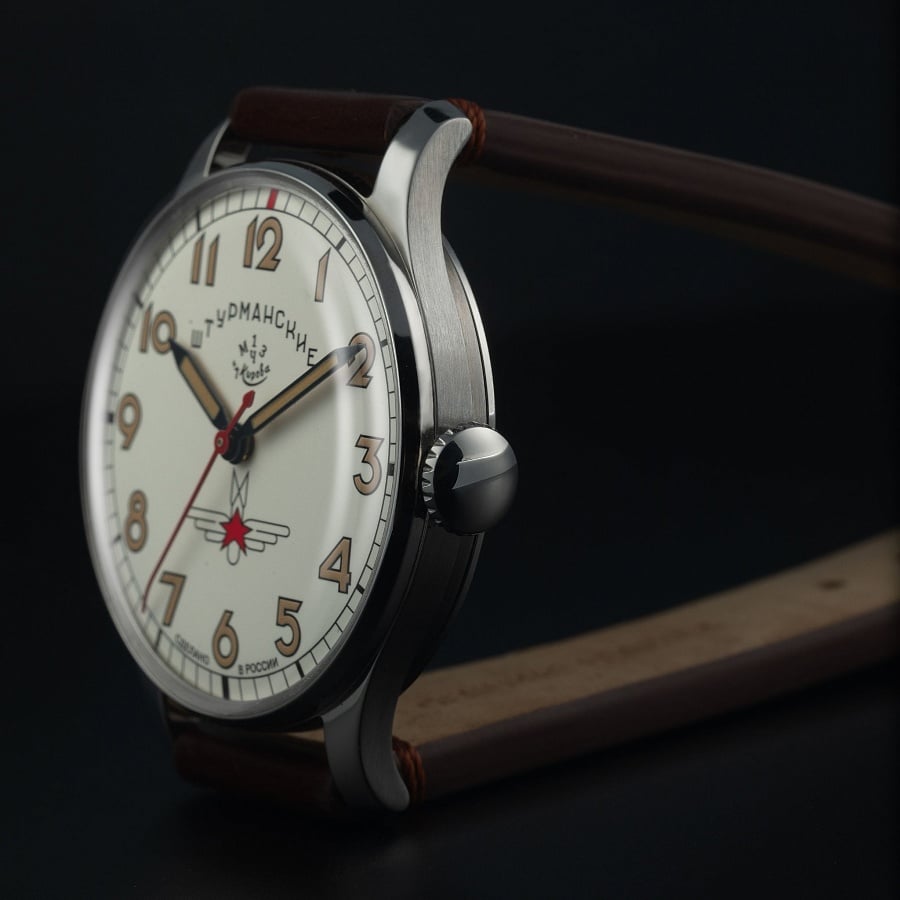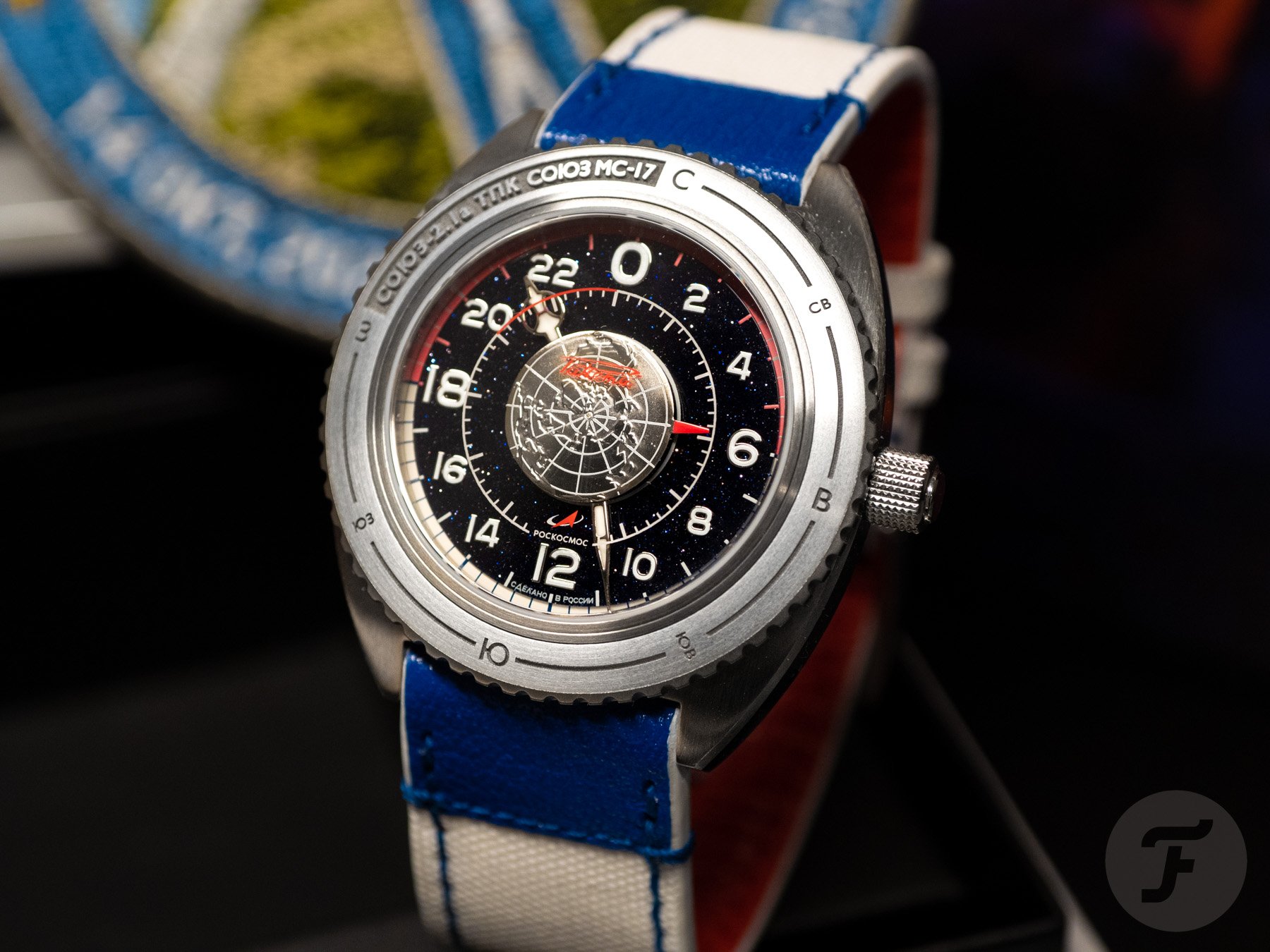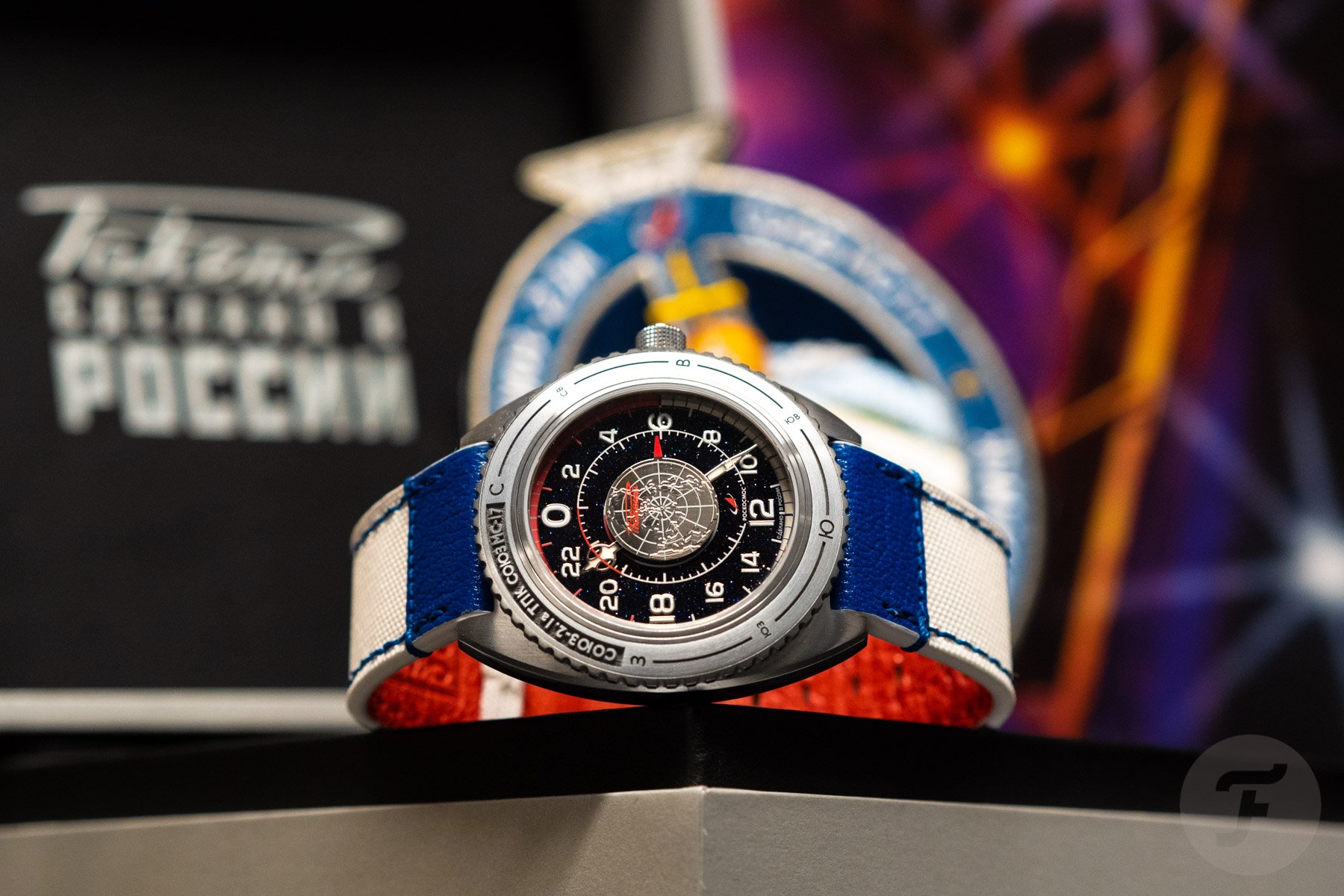Watch Dating Profiles: Russia — A Starry-Eyed Sturmanskie, A Plucky Poljot, And A Racy Raketa
We’re back again with another edition of Watch Dating Profiles. This time we’re going to Russia, where the vodka is cold and the watches are jettisoned into outer space. Seriously, Russian watches today either look back in history or towards the future, but almost always to space. There’s a lot of space to look at with Russian watches too. With the longest history of space exploration of any country, there’s been time for many different watches to leave the atmosphere. So who’s it gonna be? The Sturmanskie Gagarin 60 Years, a remake of the first watch in space? The vintage Poljot 3133 Chronograph, another space record-setter with a 1970’s design? Or perhaps contemporary is your speed. The Raketa “Space Launcher” has cosmonaut-consulted functionality and is made with real space rocket! These Russian watches will have you seeing stars.
Russian watches are necessarily rich with history. With no substantial watch industry to speak of after World War II, Stalin himself orchestrated the purchase and transport of a number of American and Swiss watch companies and calibers. This included substantial training for the Russian watchmakers-to-be. Many of these initial efforts evolved into the companies we know today. Russian watches are inexorably tied to Russian national efforts, not limited to military, but also engineering and, most of all, space exploration. The nature of Soviet rule moved and rationed watches to individuals and departments in need of them, keeping much of these watches’ heritage “strictly business”.
This is all a very unromantic way to say that there’s a deep history of Russian watches that explains where they are today. We won’t get into that here. What is romantic, however, is the lineup we have here today, and perhaps the dream these watches capture of exploring ever-deeper into space.
Starry-eyed Sturmanskie Gagarin 60 Years
Horologically speaking, watch aficionados as a breed are fascinated with space. But often overlooked is the watch that can assert to being the very first watch in space. Yuri Gagarin, Russian pilot and the first man to ever enter the vacuum of space (in a spaceship), famously had a small, unassuming watch strapped to his wrist. That watch was a Sturmanskie, one of the watch brands ordered into existence by Mother Russia. I’m not diving (much) into the immense world of vintage Russian space watches in this article, so I’ll leave out many of the details of that particular watch. But, for our enjoyment, Sturmanskie has a current line of varyingly sized-and-colored models within what the brand calls the Gagarin 60 Years.
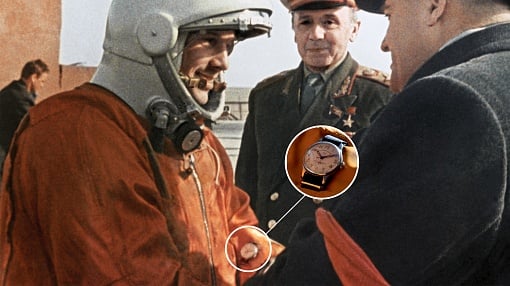
Gagarin and his Sturmanskie upon touchdown after his first flight into space. Courtesy of Sturmanskie.com
Today’s Gagarin
Among the variations is a humble 33mm watch with an ivory dial and hour numerals only reproduction radium can deliver. From what I can tell, this (ref. 2609/3771470) is the closest reproduction of Gagarin’s space watch currently available in the Sturmanskie catalog. It shares the case shape and 33mm size. The color palette and dial layout are similar to the original. And, while I haven’t done my homework enough to know what ticked away within the original, the present Strumanskie runs on pure Russian mechanical power — a hand-wound Poljot 2609.
The mineral crystal, 50m water resistance, and leather strap keep this watch relatively earthbound, or at least out of the ocean. But — I’m blindly assuming, let me know in the comments — it must have a more reliable caliber and better specs than the original ever did, so wear it to outer space with confidence. At 39,000 rubles (about $500), it’s a gamble worth making if you get the chance. Though currently out of stock on Sturmanskie’s site, there are plenty of other models to choose from (and they’ll never let the original Gagarin watch be gone for long, in one iteration or another).
A watch for eclectic enthusiasts
What is absolutely stellar is the dial design. Any typography enthusiasts should be drooling at those numerals. And enthusiast is the keyword for the optimum owner of this watch. With its dated design and — by modern standards — positively tiny size, the proud owner of this loves it for its unashamed nod to history. You’d be thrilled to explain the origin of this watch to anyone glancing at your wrist. Speaking of, wrist size is no limiting factor. You figure if Yuri Gagarin, the first man in space, had no qualms with its size, it’s more than good enough for your thick, hairy forearm (or slight, feminine wrist).
…at its dimensions, I’d argue it’s positively boisterous.
Unlike in previous articles where I’ve referred to the watches in the sense of being “the one”, I can’t in good faith suggest any of these Russian space watches would be someone’s one and only. While the Sturmanskie Gagarin 60 Years could accompany you just about anywhere, I imagine the person that would buy it would love it, and many others, for their various more obscure references to history. It’s a fun watch — in fact, at its dimensions, I’d argue it’s positively boisterous. The enthusiast that owns this watch will be one that has a well-curated stable of little “friends” with plenty of quirks and personality. The watches would have to be unique too.
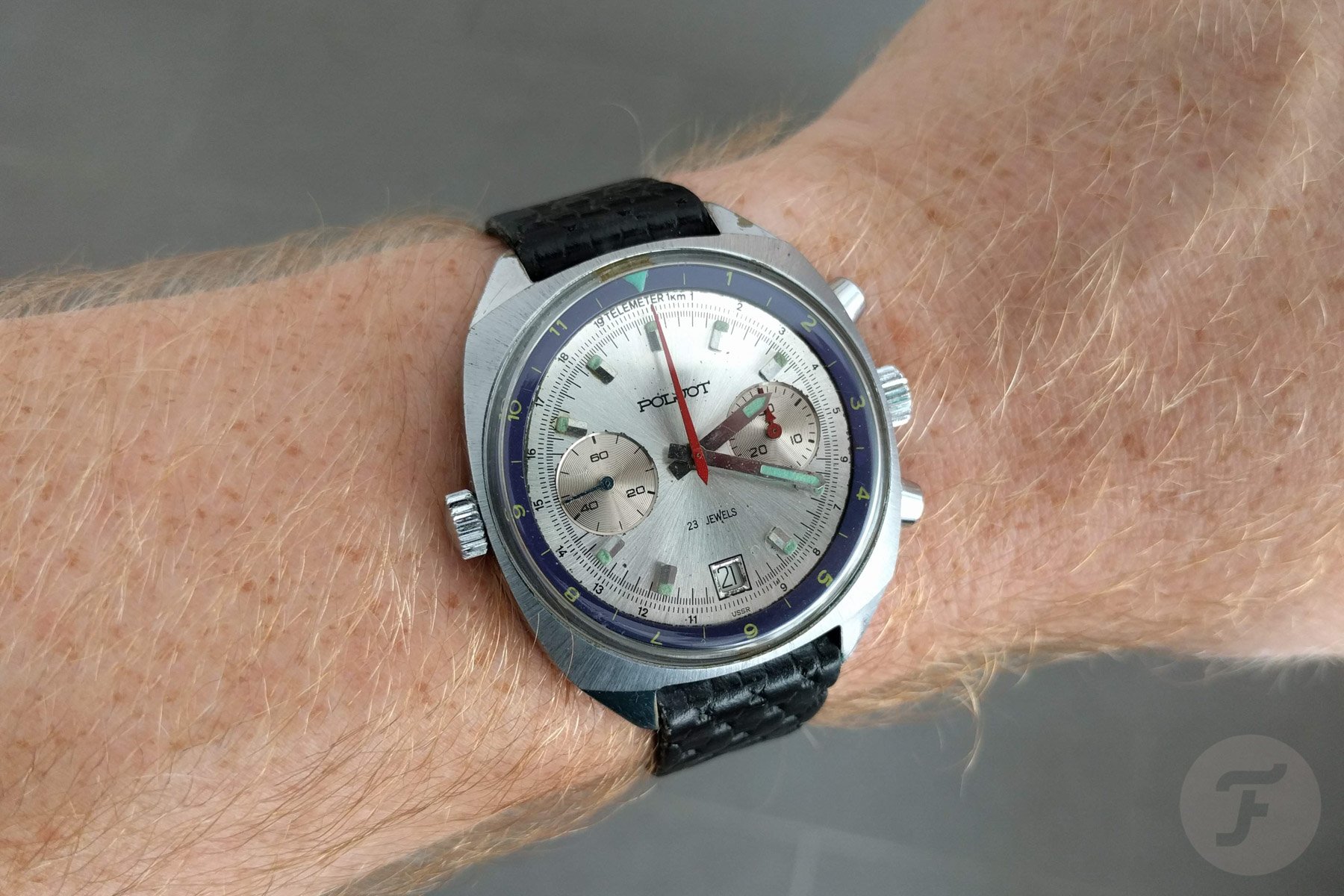
The plucky Poljot 3133
Our next piece is true 1970s vintage, opening a can of worms which I may well regret. I’ll profess my strength and knowledge is in contemporary pieces, and even then, it’s limited. The world of vintage watches and their various histories is so vast that I haven’t found the courage to dive in. Well, here I go, with a watch that I think would be missed in an exposé of sexy Russian watches.
The Poljot 3133 came in a few variations initially, each with its own significance to Soviet endeavors. Production started in 1976 after the purchase and modifications of Valjoux’s 7734 design and tools. As the caliber (3133) and watches were manufactured by the state and destined for military personnel with no sales to private citizens (that came in 1983), the only brand tied to the watches was the “Poljot” of the caliber (and occasionally on the dial). Eventually, a model branded ОКЕАН (Ocean) was produced and intended for the Russian Navy. Soon after, a Sturmanskie-branded variant was produced for the Air Force.
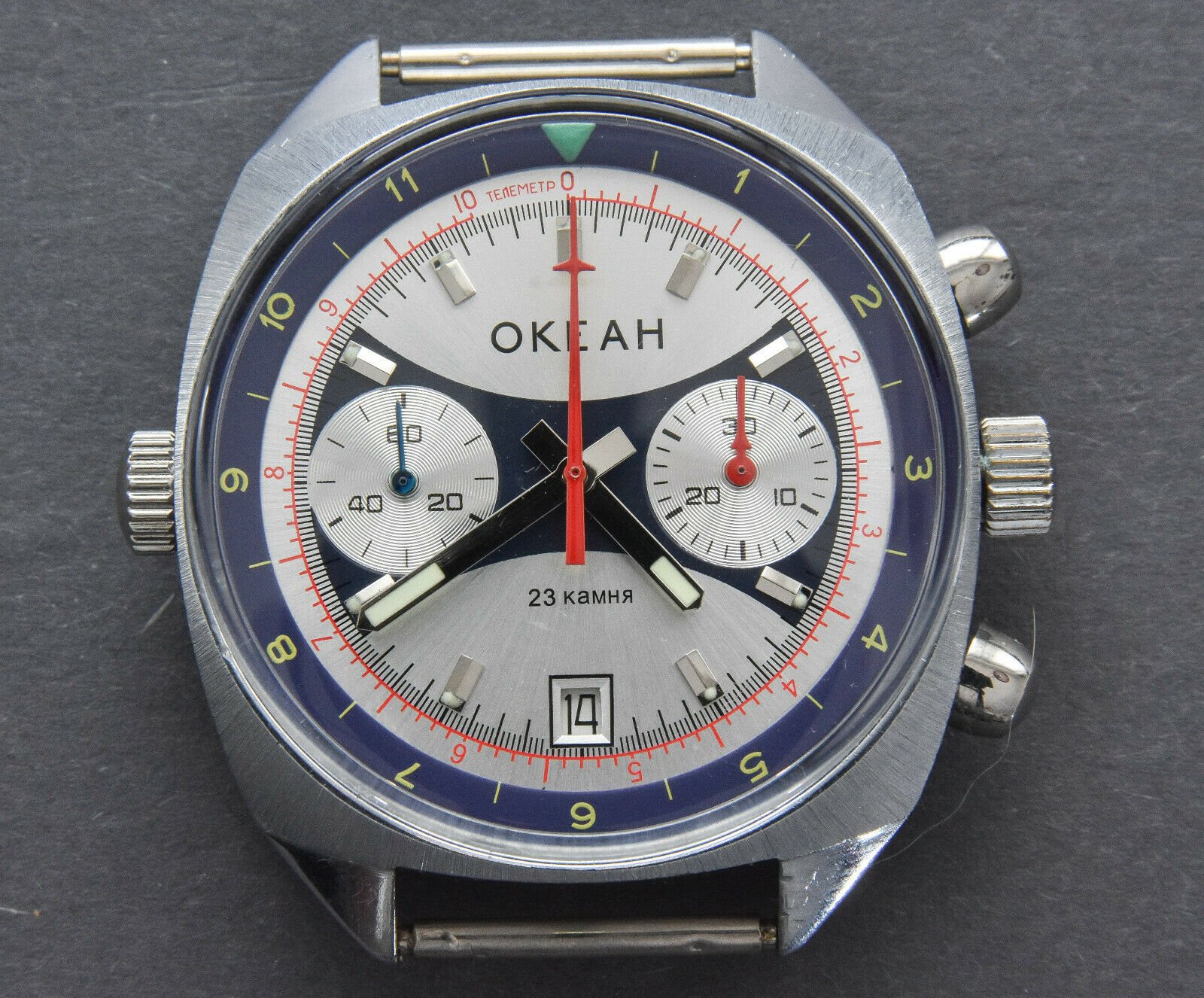
The ОКЕАН variant. This one is on eBay here.
A lot to choose from
Enter Poljot 3133 into your search engine of choice and you will come across countless variations of the watch. Some look radically different, as Poljot 3133 calibers eventually found their way into other watches. What’s important is that many of these early variations made it into space. Regardless of the model that catches your eye, the caliber itself is what made the watch. It’s what made it to space over and over again, all the while remaining relatively unchanged.
…I’m not sure what function telemetry served in the close quarters of a spaceship or the vacuum of space.
The key characteristics of the early Poljot 3133 watches, including the Sturmanskie and ОКЕАН variants, were the 1970s cushion case and styling, and an additional crown on the left side for adjusting the internal dual-time bezel. The silver dial, lumed indices, and red chronograph hands create a clean, professional look. The additional crown and inner bezel add some tasteful quirkiness. The chronograph counts up to 30 minutes, and there’s a date aperture at 6 o’clock. A telemeter often encircles the indices, though I’m not sure what function telemetry served in the close quarters of a spaceship or the vacuum of space. Examples in varying degrees of condition from various years start from as low as $300 and go up to more than $1,000. A lot more information about the different Poljot 3133s can be found here.
The space chronograph you’ve probably never heard of
The Poljot 3133 is a watch that could appeal to any ’70s chronograph collector. But the ideal owner would be someone with a bit of an edge. Where the Seiko “Pogue” might be interesting, and the Omega Speedmaster is off the table because of its popularity, the Poljot 3133 appeals to your sensibilities as the antithesis of the American space chronograph. It would be uncouth to openly admit to being the person that revels in knowing about obscure things — perhaps “discovering” bands before they become cool — but you might just be that person. Counter-culture is your culture (not applicable for Russians, as the Poljot 3133 is not “counter”). No nonsensical details and a lack of loaded branding keep the watch firmly obscure on your wrist, and firmly elegant.
The racy Raketa Space Launcher 0282
We published an article about the Raketa Space Launcher upon its release. Like Dave stated there, it’s a watch that technically didn’t go to space, but a part of it very much did. The unique solar-navigation bezel (with Cyrillic cardinal directions) is cut from the Russian Soyuz-2.1a rocket launched in 2020. Naturally, this makes the watch a limited edition, and its numbers are dwindling.
The one-of-a-kind bezel with Raketa’s 2624A 24-hour caliber makes an incredibly unique watch. This watch was designed and produced with the help of Russian Cosmonauts, adding to its space-ness. In function, it closely resembles Raketa’s Baikonur 0245, also created with the input of a Cosmonaut, which is nowhere near as “loud”.
And the Space Launcher is loud. It’s on the larger side at 43mm in diameter, and the two-tone blue and white “space suit” strap combines with the aforementioned features to make an attention-hogging watch. The finishing elements are the night-sky-like aventurine dial and engraved metal representation of Earth’s northern hemisphere in the center, obscuring most of the hands except for their rocket-like tips. It’s a limited edition of 300 units and also comes with a special patch with which to do what you please. At €1,850, it’s a lot of unique Russian watch for the money. More info is available on Raketa’s website.
Go big or go home
The Raketa Space Launcher 0282 embodies everything about Russia’s Space Race with the West. It’s bold, it’s unorthodox, and it’s an unashamed flex. It’s also collaborative, the element that made the space dream work in the previous century. The ideal owner of this watch is bold and brash, but quick to lend a helping hand. You’re not one to get hung up on the details of the past — you’re looking forward from where you’ve come. This watch is plenty capable and unorthodox, a quality mirrored in its ideal owner. Both have their sights set on the stars.
Давай поженимся! (Let’s get married!)
So there you have it! Three radically different watches for three very different types of people. All of them, however, are focused on space. Will you be going traditional with the Sturmanskie Gagarin 60 Years, or exclusive with the Poljot 3133? Or will you throw caution to the wind and boldly go with Raketa Space Launcher 0282? It’s up to you now. Let us know in the comments.

